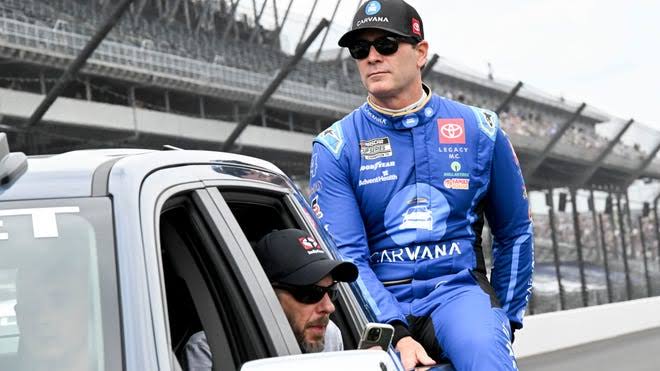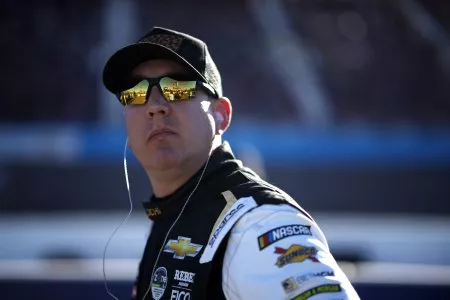Roger Penske Touts the Notion of Future IndyCar-NASCAR Doubleheader Weekends
Roger Penske, the celebrated motorsport mogul and owner of Team Penske, has been a pivotal figure in the American racing scene for decades. His influence spans across both IndyCar and NASCAR, two of the country’s most cherished and iconic motorsport series. Penske’s vision has led to the expansion of these series, the improvement of the racetracks, and the fostering of relationships within the motorsport community. In recent years, one of the most intriguing and exciting prospects for fans and teams alike has been the idea of combining these two racing worlds in the form of a doubleheader weekend.
This notion of an IndyCar-NASCAR doubleheader weekend is not new, but Penske’s endorsement of the idea brings a renewed sense of optimism and credibility to its realization. Penske, with his unparalleled success in both series and his extensive network in the racing world, has often been at the forefront of innovation in motorsports. His proposal to combine the stars of both IndyCar and NASCAR at the same event weekend is poised to revolutionize the racing landscape, bringing more exposure to both series and creating a spectacle for fans across the world.
The Rationale Behind the Doubleheader Concept
At its core, the idea of an IndyCar-NASCAR doubleheader weekend is rooted in the desire to amplify the entertainment value for racing fans, while also increasing the visibility of both series. The Indianapolis Motor Speedway (IMS), home of the Indy 500 and a venue that regularly hosts both IndyCar and NASCAR events, has already proven the potential success of such an arrangement. The concept would essentially involve hosting a race from both series on the same weekend, with the potential for back-to-back action that would cater to fans of both disciplines.
Penske’s advocacy for this concept stems from a few key motivations. First and foremost, he understands that motorsport is a form of entertainment, and one that thrives on fan engagement and excitement. By bringing together two of the most popular and distinct forms of racing—open-wheel racing (IndyCar) and stock car racing (NASCAR)—the doubleheader creates a unique opportunity for fans to experience an entire weekend of action-packed racing.
Moreover, the doubleheader format addresses the challenge of racing schedules. Both IndyCar and NASCAR have established seasons with extensive schedules, often with limited overlap between the events of the two series. A combined weekend would allow fans to experience a broader spectrum of racing in a condensed period, adding a layer of convenience while also boosting attendance at the races. Additionally, this type of event could attract new fans who may be interested in one series but hesitant to commit to attending multiple events. A doubleheader could serve as an entry point for fans to experience both NASCAR and IndyCar in one exciting weekend.
Bringing the Best of Both Worlds
IndyCar and NASCAR are two distinct forms of racing, each with its unique history, fanbase, and style of racing. IndyCar, known for its open-wheel cars, is a series that often features high-speed racing on road courses and ovals, with an emphasis on aerodynamics, precision, and technology. On the other hand, NASCAR, with its stock cars, typically races on oval tracks, where close-quarters racing and strategy play a significant role in the outcome of a race. Despite these differences, both series boast a loyal fanbase and attract significant media attention, with several fans of one series also following the other.
Penske’s endorsement of the doubleheader weekend stems from the recognition that fans of both series have much to offer each other. While the technical details and racing styles differ, there are common threads that bind these two racing disciplines together. Both series are deeply rooted in American culture, both provide high-octane action on the track, and both rely on passionate fans and dedicated teams.
For the teams and drivers, a doubleheader weekend could offer numerous opportunities as well. Drivers in both IndyCar and NASCAR often participate in multiple forms of racing, and many have expressed an interest in competing in both series at some point in their careers. The combination of the two events could allow drivers to explore different disciplines without the need to split their time between separate events in distant locations. This would not only be beneficial for the drivers but would also generate interest among fans who appreciate seeing the crossover between IndyCar and NASCAR stars.
Challenges and Considerations
As exciting as the prospect of an IndyCar-NASCAR doubleheader weekend sounds, there are several challenges and considerations that must be addressed before such events can become a reality.
Scheduling Conflicts
Both IndyCar and NASCAR maintain rigorous and often overlapping schedules. One of the primary concerns surrounding the idea of a doubleheader weekend is the timing and coordination between the two series. While both series have several shared weekends throughout the year, aligning their schedules in such a way that both series can compete on the same weekend at the same venue would require a significant amount of coordination. Furthermore, race weekends for both series often involve practice sessions, qualifying, and support races, meaning that the logistics of fitting both series into the same weekend could be complex.
Penske, with his deep knowledge of both the IndyCar and NASCAR schedules, would likely advocate for a solution that ensures minimal disruption to the existing calendar of both series. This could involve reworking some of the race weekends or strategically selecting tracks that are best suited to hosting both types of races.
Track Compatibility
Another challenge to overcome would be track compatibility. While both IndyCar and NASCAR race on oval tracks, the configurations of these tracks vary significantly. IndyCar tends to favor high-speed road courses and ovals, whereas NASCAR races are often confined to short tracks or superspeedways. To ensure that a doubleheader weekend is successful, it would be necessary to select tracks that are capable of hosting both types of cars. This could involve tweaking the layout of existing tracks or building new ones that could accommodate both racing styles.
Additionally, it would be crucial to maintain a high level of safety at these events. The racing dynamics between the two series differ, and the risk of accidents could increase if the races are not properly managed. Penske’s experience in managing complex events would play a crucial role in ensuring the safety and success of such weekends.
Cost and Logistics
The financial considerations of staging a doubleheader weekend cannot be ignored. The cost of running both IndyCar and NASCAR events on the same weekend would be significant. This includes the costs of track preparation, staffing, media, and logistical coordination. Additionally, teams and drivers would need to make significant adjustments to their schedules and accommodations.
However, these challenges can be mitigated through strategic partnerships and sponsorship deals. Penske, with his vast network and resources, would likely be instrumental in attracting the necessary sponsorship and support to make such an event financially viable. Corporate sponsors, who benefit from the exposure provided by both series, could be incentivized to get behind the concept, offering financial support and promotional backing.
The Impact on Fans and the Motorsports Industry
For fans, a doubleheader weekend could bring an entirely new level of excitement and engagement. The opportunity to witness two of America’s premier motorsport series on the same weekend would undoubtedly be a major draw. The energy of a doubleheader event would create an atmosphere of competition and camaraderie, as fans of both IndyCar and NASCAR come together to witness their favorite drivers battle it out on the same track.
From a broader perspective, the introduction of IndyCar-NASCAR doubleheader weekends could lead to a more interconnected motorsports community. The two series, which have often been seen as rivals in terms of fan loyalty and style of racing, could find new opportunities for collaboration. Penske, with his role as a major figure in both IndyCar and NASCAR, is uniquely positioned to bridge the gap between these two worlds.
Moreover, the increased visibility that would come from a combined event could attract new fans, sponsors, and media attention to both series. This type of event would likely generate interest beyond the traditional motorsport fanbase, bringing in new viewers who are curious about the spectacle of both series coming together.
Conclusion
Roger Penske’s endorsement of an IndyCar-NASCAR doubleheader weekend represents a bold vision for the future of American motorsports. The idea of combining two of the country’s most iconic racing series into one exciting event could change the landscape of motorsport as we know it. While challenges such as scheduling conflicts, track compatibility, and financial considerations need to be addressed, the potential rewards for the sport, the teams, the drivers, and the fans are enormous.
For Penske, this idea represents the next evolution in the motorsports entertainment experience, drawing on his deep understanding of both series and his commitment to pushing the boundaries of what’s possible in racing. By promoting unity, collaboration, and innovation, the IndyCar-NASCAR doubleheader could serve as a new benchmark for how racing can bring people together and create a lasting impact on the industry. If executed well, it could be the beginning of an exciting new era in motorsports, one that appeals to a broader audience and continues to captivate the imagination of racing fans everywhere.





